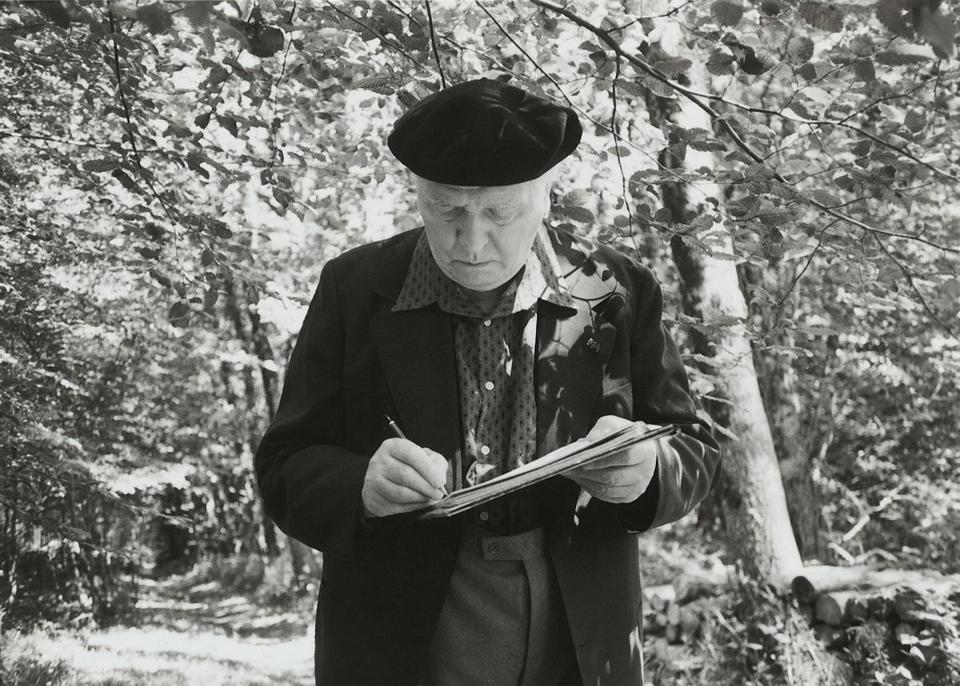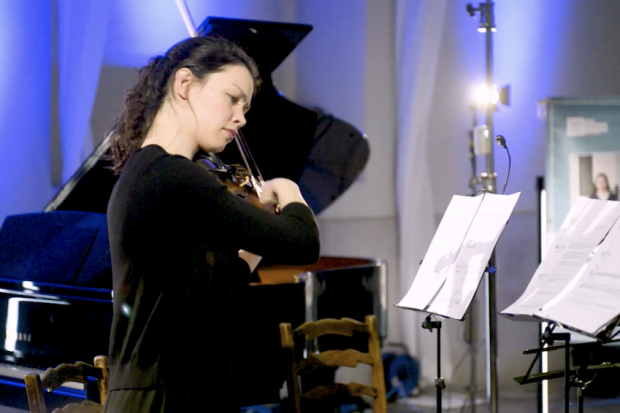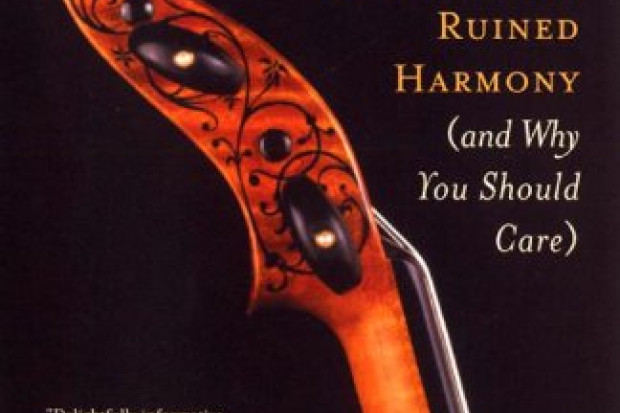
Animal Sounds or Animal Songs?
Since the mid-twentieth century, there has been increased interest, on the part of scientists as well as the general public, in the cognitive abilities of non-human animals, such as African gray parrots’ ability to use spoken words symbolically and the creation of tools by New Caledonian crows. Simultaneously, increased awareness of the fragility of the earth’s ecosystems has led us to pay closer attention to the intricacy, complexity, and beauty of the natural world. This is reflected in music in several ways: in music which uses animal songs for inspiration, in the recognition of music-like qualities of animal song, and in the growth of research into the relationship between animal songs and music.
Songs as Symbols
Animal songs have been a part of human music in cultures throughout the world for at least as long as written records can tell us. While people of rural cultures have typically paid close attention to animal songs — imitating them precisely, or creating music specifically for interacting with animals — composers of Western classical music, which developed primarily in the more densely peopled environments of the church, court, and concert hall, have tended to keep animal songs at the margins. When animal songs did appear in Western classical music, they were often quite stylised, sometimes to the point of being unrecognizable. In the Middle Ages and Renaissance, bird songs were used most often for symbolic reasons: nightingale song might represent faithfulness and purity, as cuckoo song might deception. In the Baroque and Classical eras, animal imitations were often used as a source of humour, while Romantic composers used animal sounds to evoke the idea of the pastoral. In all of these cases, the sounds of the animal songs were secondary to the human structure and narrative, and the intervention of the human composer was considered necessary to turn them into music.
Birdsong
With increasing frequency throughout the twentieth century, some composers began to give animal song a more central role in their music. One who did so early on was the American composer Amy Beach (1867-1944). Her perfect pitch enabled her to transcribe birdsongs with as much accuracy as possible in the era before easy access to recording technology, and she kept a notebook of these notated birdsongs, many of which found their way into her music. Her piano pieces A Hermit Thrush at Eve and A Hermit Thrush at Morn, for example, are based on detailed transcriptions of the songs of individual hermit thrushes she heard at the MacDowell Colony in New Hampshire, where she spent many of her summers composing
.
Born several decades later, the French composer Olivier Messiaen (1908-1992), is the best-known mid-twentieth century composer to use bird songs in his music. He recorded and then transcribed birdsongs, using them as fundamental gestural, rhythmic, melodic, and structural building blocks of his musical language. Whereas animal song imitations by earlier composers typically stand in opposition to their usual musical language, for Messiaen, birdsongs were at its core. In Catalogue d’Oiseaux (1958), a 165-minute work for solo piano, for example, each movement is based on transcriptions of the song of a single species.
More recent composers strongly influenced by animal songs include the French composer and founder of the emerging discipline of zoomusicology François-Bernard Mâche, who has allowed birdsongs to structure entire pieces, sometimes having the instrumentalists play along with an unaltered recording of a birdsong. American/Australian violinist and composer Hollis Taylor derives much of her recent compositional and improvisational language from the song of the Pied Butcherbird, and American composer and philosopher David Rothenburg improvises with birds.
Sonic and Behavioural Similarities
It is not surprising that animal songs are such a common inspiration for music: many are sufficiently similar to human music in terms of timbre, pitch selection, rhythm or structure that we describe them as ‘musical’. In some cases, we impose our own musical biases on animal song, for example, canyon wrens are often said to follow a descending chromatic scale, when in fact they are just singing a series of pitches that descend in small increments, though not in semitones.
In other cases, however, animals songs do exhibit profound similarities with our own music. My recent research [1] shows that hermit thrushes sing songs with pitch relationships taken from the overtone series. Humpback whales sing ‘rhymes’, in which two different sung phrases end the same way, similar to parallel phrase structure in human music, while parrots have recently been demonstrated to be able to move in time with an external beat, an ability previously unknown in non-human animals.
Less immediately obvious than sonic similarities – but perhaps much more important – are behavioural similarities. Many of the species whose songs we consider most musical – whales and passerine birds (songbirds), for example – are vocal learners: they must learn their songs from surrounding members of their species, just as we do. Their songs are thus culturally transmitted and often subject to regional variation, just as the kind of music we make depends on the culture in which we live.
Human musical phrase length tends to be affected by our breath length, and rhythms tend to relate to our heart-rate.The same is true of animal song: birds, with their faster metabolisms, and hearts beating hundreds of times a minute, tend to sing fast, short songs, while whales, whose hearts beat as infrequently as six to ten times per minute, and who can hold their breath an hour or more, sing long, drawn out songs in song sessions lasting up to twenty-four hours. Both humans and animals tailor their songs to the emotional tenor of the situation, choosing to sing with very different inflections when singing to their young, or in confrontation with a neighbour (now seen most often in humans in the context of sports rivalry, and the attendant aggressive songs).
Zoomusicology and Family Resemblance
If some animal songs share so much with human music, it makes sense to ask – are they music? The field of zoomusicology – established by François-Bernard Mâche in the 1980s, and recently furthered by such scholars as Dario Martinelli and Hollis Taylor – specifically addresses this question. Of course, even when dealing only with humans, it’s difficult to define music. Is it possible to come up with a definition that would include a Mozart violin concerto, a toddler singing to herself while playing, and electronic noise music while excluding the noise of the highway, the sound of an alarm clock, and the babbling of a brook? [2]
I believe that human music is actually best described as a sort of family resemblance – there are many traits that most music has most of, but not all music has all of. Each person may consider different traits to be relevant. For me, cultural transmission, connection with physical rhythms of the body, and connection of sound with emotion are important aspects of music. These traits are as much a part of many animal songs as they are of human music.
I don’t mean to suggest that everyone must now think of animal songs as music – this depends on our own personal understanding of music. Nor do I think that birdsong, whale song, and human music are homologous developments – it’s very unlikely that our musical abilities all evolved from some reptilian common ancestor hundreds of millions of years ago.
But I do suggest that our songs evolved convergently – in parallel – and that they are similar enough that it can be helpful to look at them through the same lens. Tools of music analysis can help us better understand the patterns and structures of animal song, while tools of biology can help us better understand the role music plays in the life of a human being. Ultimately, I hope that increased attention to the songs created by individuals of other species will lead us to greater respect of and caring for the non-human beings with which we share the earth.
Notes:
1. Emily Doolittle, Bruno Gingras, Dominik Endres and Tecumseh Fitch , “Overtone-based Scales in Hermit Thrush Song: Unexpected Convergence with Human Music” (MS in prep.)
2. John Cage and others would, of course, argue that all of these can equally be considered music, as “music” is in the ear of the listener. On a practical level, however, I think most of us continue to distinguish between music and non-music, and believe that there is a significant difference between songs produced by living beings and sounds produced as a by-product of the processes of non-living objects.
Published on 9 July 2012
















